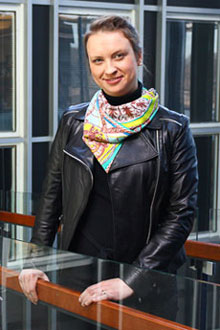In Banks We Trust?
Following the on-going financial crisis, central banks continue to be important players in stabilizing markets. However, after decades of delivering stable price levels, they start acting irresponsibly and jeopardize their credibility, writes Senior Research Fellow Aleksandra Maslowska.

One of the keys to our prosperity is sound money. It means that purchasing power of money, that is how much we can buy for, for example, 10€ does not change within time. In practice, central banks are the guards of this price stability. For past decades, central bankers have sought public trust in stable currency with various types of monetary policy. Having common currency, like euro or an independent central bank are some of the ways of building credibility of commitment to deliver sound money.
Recent financial crisis have put central banks to a grand test. To restore markets into a steady state, they have implemented several unconventional instruments, which bring the goal of sound money to a threat. For the observer of current monetary policy, it may seem as if a central bank promises to behave irresponsibly by seeking a higher future price level.
Credibility at Stake
Some claim that the use of these unconventional measures has been successful and that central banks can at least partially be responsible for the stabilization in the markets. The general public, however, seems to have a different opinion; public trust in central banks has declined.
European trust in the European Central Bank (ECB) or in euro has been declining in most Eurosystem states. Trend to trust to the ECB has been decreasing strongly since 2007, while the trend not to trust is now higher than before the crisis. The general support for single currency, since its peak in years 2002-2003, has recorded large fluctuations and recently only decline. However, European public trusts more in the common currency than in the common monetary institution.
One Monetary Policy Does Not Fit All
How a central bank designs its policy is especially difficult, when a bank needs to find its optimal level for many countries. That one monetary policy doesn’t fit all, we have observed since the beginning of the Economic and Monetary Union (EMU).
However, this division is even stronger during crisis, when members of a monetary union are experiencing especially different macroeconomic conditions. Now, a single policy rate is unlikely to fit circumstances in all countries. Germany’s economy is booming, while Spain has an unemployment rate of 26 per cent (February, 2013).
Current situation may lead to crucial changes in institutional design of the ECB. The credibility of the ECB’s price stability, as well as institution’s independence is currently in jeopardy, because of the fiscal temptation to resort to inflation to reduce in real terms some of the public debt.
(R)evolution of Monetary Policy Making Institutions
History shows that every great event is followed by a new world standard. It is no different with respect to central banks. The design of monetary institutions and the way of monetary policy formulating have been evolving over the decades. In fact, it has changed radically. Central banks were originally institutions created to finance wars, manage public debt, or consolidate note-issuing authority. They also served the interests of governments via the seigniorage revenues they generated. 
By the 1990s there was widespread agreement about the need to ensure some form of price stability and the role of central banks changed. The regime adopted in many countries was one in which the central bank was delegated operational independence to vary the official short-term interest rate.
However, in recent period of crisis, monetary authorities seem to return to participating in active fiscal policy, exercised in the form of excessive lender of last resort support. Where will the central banking continue after the crisis? There are many questions but so far - few answers.
Aleksandra Maslowska
The writer works as a Senior Research Fellow in the Public Choice Research Centre of the University of Turku. In 2014, she will continue her research as a Postdoctoral Researcher in Turku School of Economics of the University of Turku.
Photograps: Henna Borisoff and Jim D. Woodward